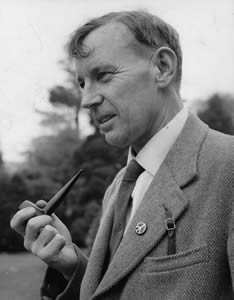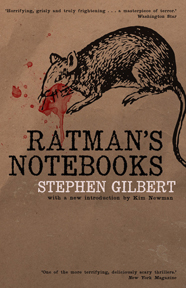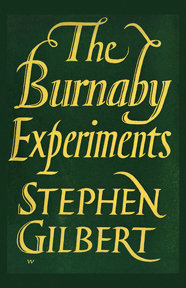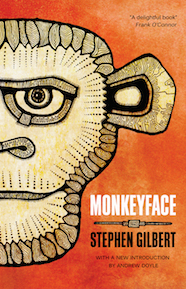|
BOOK DETAILS
Trade paper ISBN-13: 978-1943910335 List Price: $22.99 U.S. Pages: 320 Published: 2016 |
Bombardier (1944)
Stephen Gilbert With a new introduction by Andrew Doyle Book Description
Stephen Gilbert (1912-2010) is best remembered today for his fantasy and horror novels, including The Landslide (1943), which featured a talking dragon and sea serpent, Monkeyface (1948), centering on an super-intelligent ape, and Ratman's Notebooks (1968), the best-selling novel about killer rats that inspired several films. Given his background as an imaginative novelist, it is perhaps surprising that Gilbert also authored one of the most realistic and authentic novels to emerge from World War II, Bombardier (1944). A success when first published, Gilbert's novel is a lightly fictionalized account of his own experiences in the 3rd Ulster Searchlight regiment in France in 1940, in the period leading up to the military disaster that ended in the Dunkirk evacuation. Narrated from the point of view of a young and ingenuous enlisted man, Lance-Bombardier Peter Rendell, and written in Gilbert's characteristically elegant prose, Bombardier is a fascinating account of a major event in 20th-century history. |
reviews
‘A writer of distinction.’ - E. M. Forster
‘Dramatic, at times exciting, and always admirably written.’ - Forrest Reid
‘The tremendous events of the retreat to Dunkirk, the bombing of the town, and the sinking of their ships ... Mr. Gilbert has done quite a good job.’ - The Guardian
‘Dramatic, at times exciting, and always admirably written.’ - Forrest Reid
‘The tremendous events of the retreat to Dunkirk, the bombing of the town, and the sinking of their ships ... Mr. Gilbert has done quite a good job.’ - The Guardian
ALSO AVAILABLE THROUGH ONLINE RETAILERS
MORE TITLES BY THIS AUTHOR
AUTHOR BIOGRAPHY

Stephen Gilbert (1912-2010) was born in Newcastle, Co. Down in 1912. He was sent to England for boarding school from age 10 to 13 and afterwards to a Scottish public school, which he left without passing any exams or obtaining a leaving certificate. He returned to Belfast, where he worked briefly as a journalist before joining his father’s tea and seed business. In 1931, just before his nineteenth birthday, Gilbert met novelist Forrest Reid, by that time in his mid-fifties. Reid’s numerous novels reflect his lifelong fascination with teenage boys, and he was quickly drawn to Gilbert; the two commenced a sometimes turbulent friendship that lasted until Reid’s death in 1947. Reid acted as mentor to Gilbert, who had literary aspirations, and ultimately depicted an idealized version of their relationship in the novel Brian Westby (1934).
Gilbert’s first novel, The Landslide (1943), a fantasy involving prehistoric creatures which appear in a remote part of Ireland after being uncovered by a landslide, appeared to generally positive reviews and was dedicated to Reid. A realistic novel, Bombardier (1944), followed, based on Gilbert’s experiences in the Second World War. Gilbert’s third novel, Monkeyface (1948), concerns what seems to be an ape, called “Bimbo,” discovered in South America and brought back to Belfast, where it learns to talk. The Burnaby Experiments appeared in 1952, five years after Reid’s death, and is a thinly disguised portrayal of their relationship from Gilbert’s point of view and a belated response to Brian Westby. His final novel, Ratman’s Notebooks (1968), the story of a loner who learns he can train rats to kill, would become his most famous, being twice filmed as Willard (1971; 2003).
Gilbert married his wife Kathleen Stevenson in 1945; the two had four children, and Gilbert devoted most of his time from the 1950s onward to family life and his seed business. He died in Northern Ireland in 2010 at age 97.
Gilbert’s first novel, The Landslide (1943), a fantasy involving prehistoric creatures which appear in a remote part of Ireland after being uncovered by a landslide, appeared to generally positive reviews and was dedicated to Reid. A realistic novel, Bombardier (1944), followed, based on Gilbert’s experiences in the Second World War. Gilbert’s third novel, Monkeyface (1948), concerns what seems to be an ape, called “Bimbo,” discovered in South America and brought back to Belfast, where it learns to talk. The Burnaby Experiments appeared in 1952, five years after Reid’s death, and is a thinly disguised portrayal of their relationship from Gilbert’s point of view and a belated response to Brian Westby. His final novel, Ratman’s Notebooks (1968), the story of a loner who learns he can train rats to kill, would become his most famous, being twice filmed as Willard (1971; 2003).
Gilbert married his wife Kathleen Stevenson in 1945; the two had four children, and Gilbert devoted most of his time from the 1950s onward to family life and his seed business. He died in Northern Ireland in 2010 at age 97.





